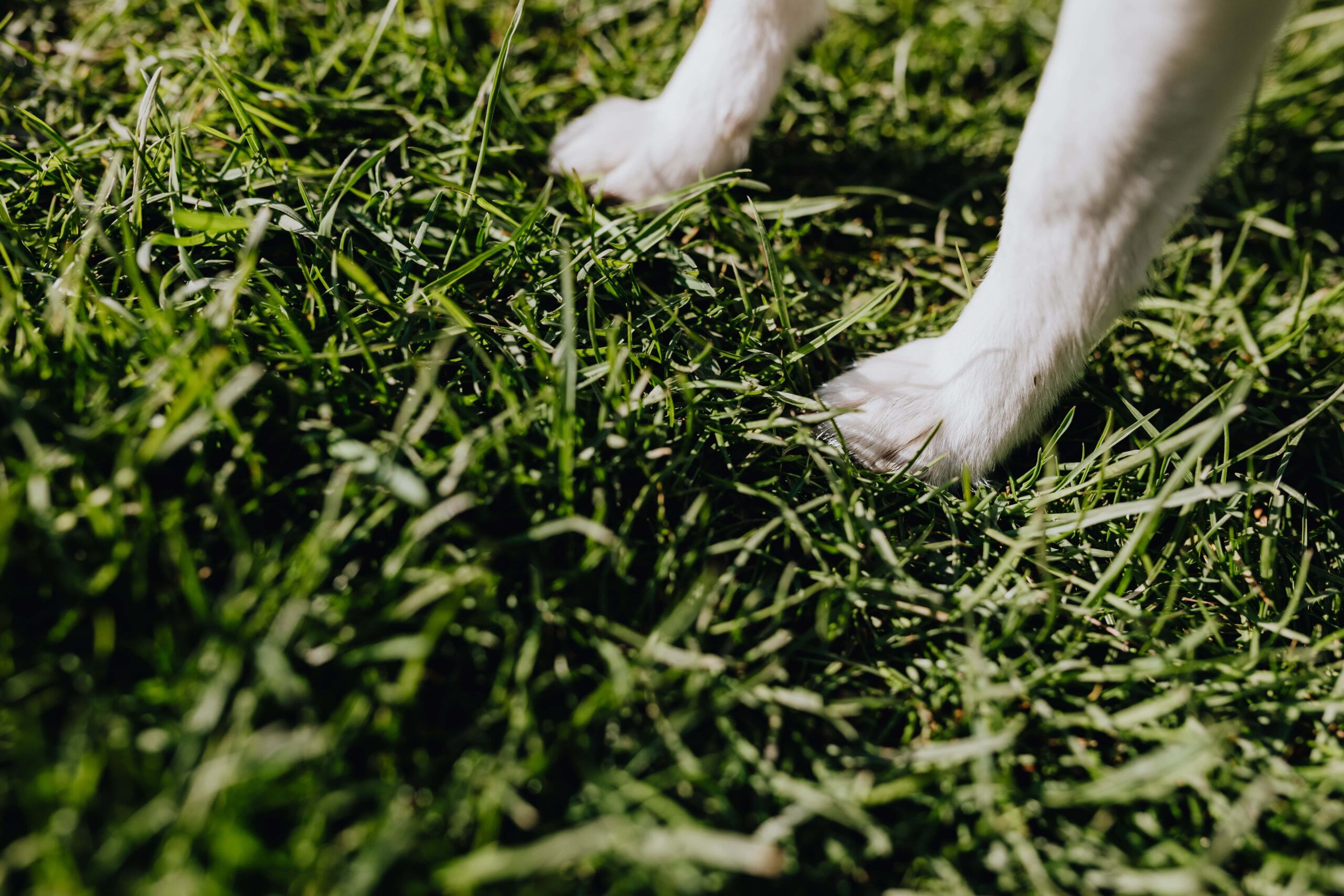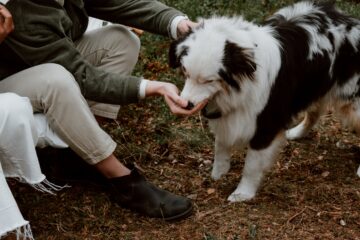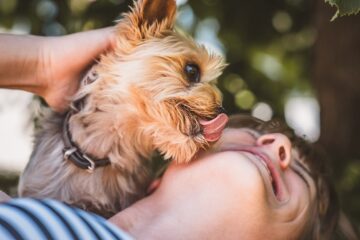Maintaining a vibrant and healthy lawn is a point of pride for many homeowners, but the challenge arises when our beloved furry friends contribute to the unsightly yellow patches that result from their urine.
If you’ve found yourself grappling with the issue of dog pee causing damage to your grass, worry not.
This comprehensive guide is here to provide you with practical insights and effective strategies on How to Stop Dog Pee From Killing Grass.
By making a few adjustments in your approach and incorporating simple tips, you can strike a harmonious balance between maintaining a lush lawn and ensuring the well-being of your canine companion.
One of the primary concerns for pet owners is the impact of canine urine on grass.
The nitrogen content in dog urine, while not harmful in moderate amounts, can lead to brown spots and damage when concentrated in one area.
Recognizing this challenge, we delve into various techniques and solutions that not only address the issue but also promote a healthier lawn without compromising your dog’s happiness.
Table of Contents
12 Tips on How to Stop Dog Pee From Killing Grass
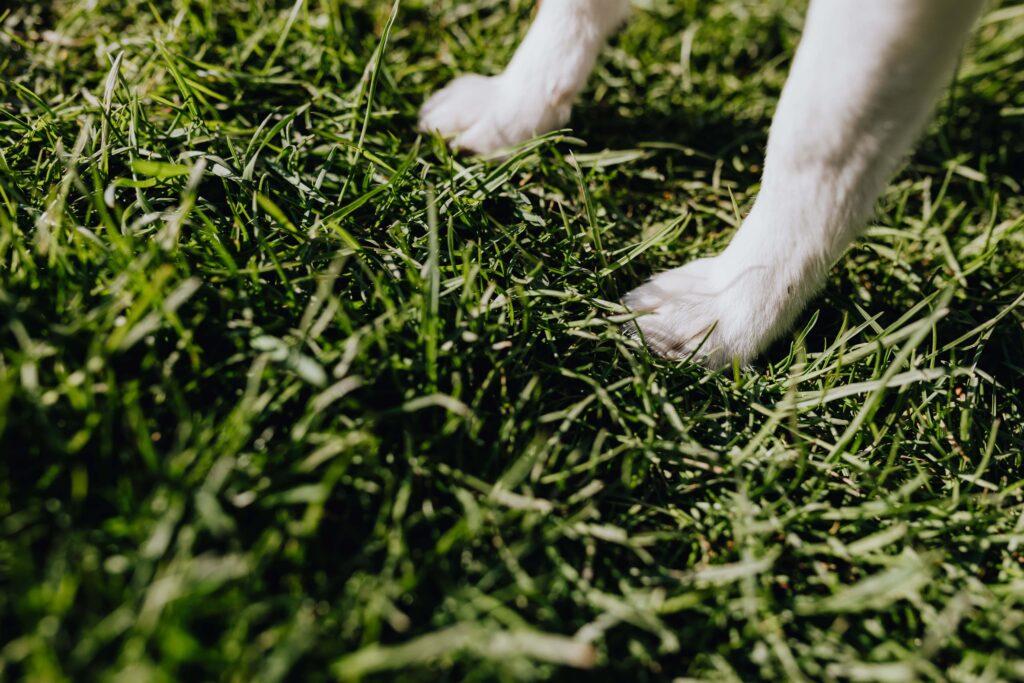
1] Hydration Matters
The significance of hydration in mitigating the impact of dog urine on your lawn cannot be overstated.
By ensuring your furry friend stays well-hydrated, you contribute to diluting the urine and reducing its potency.
Make clean water readily available, especially after playtime and walks, creating an environment where your dog remains refreshed and your lawn thrives without bearing the brunt of concentrated urine.
2] Strategic Watering
Strategically watering your lawn serves as a proactive measure against the effects of concentrated dog urine.
Regularly hose down areas where your dog frequently relieves themselves, effectively diluting the nitrogen-rich urine and minimizing its adverse impact on the grass.
Consider designating a specific “pee zone” and incorporate consistent watering to disperse the urine’s nitrogen content, fostering a healthier and more resilient lawn.
Tip: “Create a designated ‘pee zone’ and water it regularly to disperse nitrogen-rich urine.”
3] Timing is Key
Mastering the art of timing in lawn watering proves instrumental in preserving the vibrancy of your grass.
Water your lawn before permitting your dog outdoors, priming the soil to absorb and mitigate the effects of urine.
Post-bathroom breaks, follow up with additional watering to further dilute and disperse concentrated urine, presenting a comprehensive solution to the challenges posed to your lawn.
4] Landscaping Solutions
Elevate your landscaping game by introducing dog-friendly plants that withstand the occasional impact of canine urine.
Opt for resilient options like clover and ryegrass, known for their durability in the face of pet-related challenges.
These alternatives not only provide an aesthetically pleasing landscape but also serve as sturdy substitutes for traditional grass.
• Elevate landscaping with dog-friendly plants resistant to urine • Choose resilient options like clover and ryegrass • Durable alternatives offer an aesthetically pleasing landscape • Serve as sturdy substitutes for traditional grass.
5] Supplements for a Healthy Lawn
Embark on a journey of lawn preservation by exploring dog food supplements designed explicitly to counteract the acidity of urine.
These supplements, seamlessly integrated into your dog’s diet, work harmoniously to balance the pH levels in their urine.
The result is a win-win situation where your dog enjoys a balanced diet, and your lawn flourishes in the face of canine bathroom habits.
6] Quick Rinsing
Efficiency is key when it comes to managing the aftermath of dog bathroom breaks.
Keep a watering can or hose within easy reach of your outdoor space for quick and immediate rinsing.
This on-the-spot dilution significantly minimizes the concentration of nitrogen in the urine, acting as a swift and effective measure to protect your grass.
Tip: “Immediate dilution minimizes nitrogen concentration, reducing the impact on the grass.”
7] Explore Doggy Pads
Tailor your approach based on your dog’s size by considering doggy pads as an alternative for smaller breeds.
Train your dog to use these pads in a designated area, diverting their bathroom activities away from your lawn.
This thoughtful strategy not only preserves your grass but also accommodates the needs of your smaller canine companion.
8] Regular Lawn Maintenance
Fortify your lawn against the impact of dog urine by adhering to a robust maintenance routine.
Regular mowing, aeration, and fertilization contribute to the overall health of your lawn.
A well-cared-for lawn proves more resilient, bouncing back quickly from occasional challenges posed by dog pee, and maintaining its lush and inviting appearance.
Tip: “A well-cared-for lawn is more resilient to the occasional effects of dog pee, staying lush and vibrant.”
9] Spot Training
Investing time in spot training pays dividends in terms of lawn preservation.
Train your dog to use a specific area for bathroom breaks through positive reinforcement, treats, and praise.
By instilling this behavior, you not only protect the majority of your lawn but also create a harmonious coexistence where your dog understands and respects the designated relief zone.
10] Gardening Solutions
Harness the power of baking soda as a natural and pet-safe remedy to counteract the effects of dog urine on your lawn.
Sprinkle baking soda generously on areas frequented by your dog for bathroom breaks.
This simple yet effective application neutralizes acidity, preventing damage to the grass and offering a budget-friendly solution for maintaining a vibrant and green outdoor space.
In the simplicity of baking soda, your lawn finds a natural shield against the effects of canine relief.”
11] pH-Neutralizing Products
Delve into the realm of lawn-friendly treatments designed specifically to neutralize soil pH.
These products work harmoniously to balance the acidity levels induced by dog urine, safeguarding your grass from potential harm.
Following the instructions provided ensures optimal results, making pH-neutralizing products a valuable tool in your arsenal for maintaining a thriving lawn.
12] Consult a Professional
When uncertainties persist or you seek tailored solutions, consulting with a landscaping professional becomes a prudent course of action.
A specialist in landscaping can conduct a thorough assessment of your lawn, offering expert insights and creating a customized landscape design that accommodates both your dog’s needs and your aspirations for a lush and resilient green space.
This collaborative approach ensures a holistic solution that addresses the unique dynamics of your outdoor environment.
Tip: “Assess your lawn, create a pet-friendly landscape design, and enjoy the expertise of a specialist.”
How to Stop Dog Pee From Killing Grass: FAQs
Can all dog breeds cause lawn damage with their urine?
Yes, while the severity may vary, all dog breeds can potentially cause lawn damage with their urine. Implementing preventive measures can help minimize the impact.
Is brown grass from dog urine reversible?
In many cases, yes. With proper care, including watering, fertilizing, and soil treatments, brown patches caused by dog urine can recover over time.
How long does it take for grass to recover from dog urine damage?
Grass recovery time varies based on factors such as grass type, soil health, and care. With proactive measures, recovery can take a few weeks to a couple of months.
Are there grass types more resistant to dog urine?
Certain grass types, like fescue and perennial ryegrass, are more resistant to dog urine due to their hardiness and ability to recover from stress.
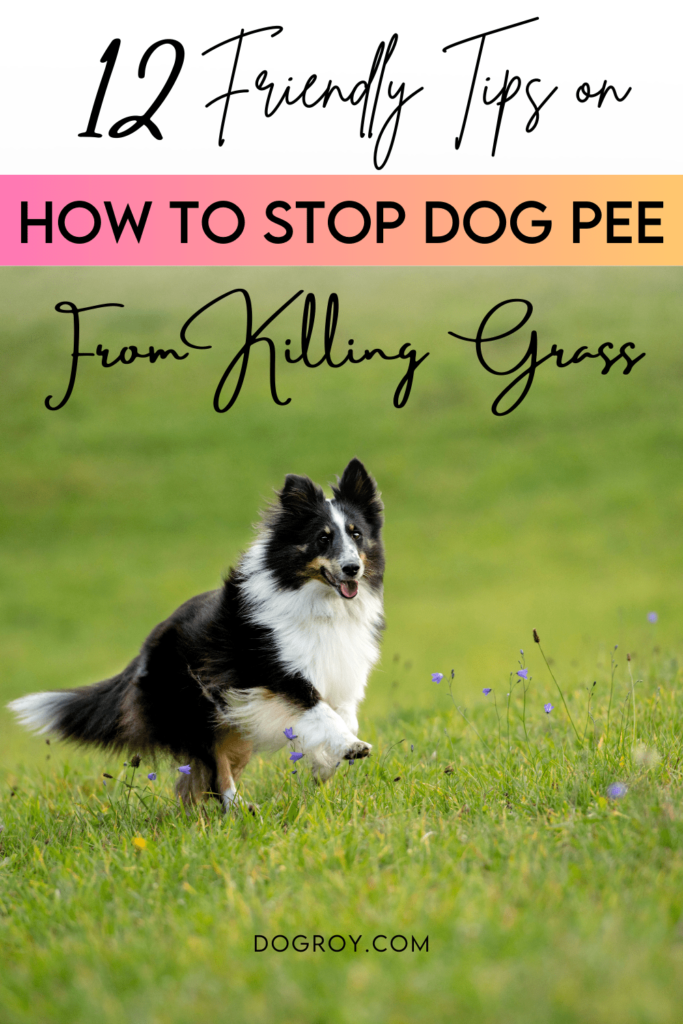
Conclusion:
Mitigating the effects of dog pee on your grass is a manageable task with the right approach.
By incorporating the strategies outlined in this guide on How to Stop Dog Pee From Killing Grass, you can transform your lawn into a thriving oasis while keeping your furry friend happy and healthy.
From modifying your dog’s diet to adopting consistent watering practices and creating designated areas for bathroom breaks, these solutions offer a holistic approach to preserving the beauty of your lawn.
Embrace these changes, witness the positive transformation in your outdoor space, and revel in the joy of a flourishing lawn alongside your cherished canine companion.
Also read : Why Does My Dog Sleep Behind My Knees?

